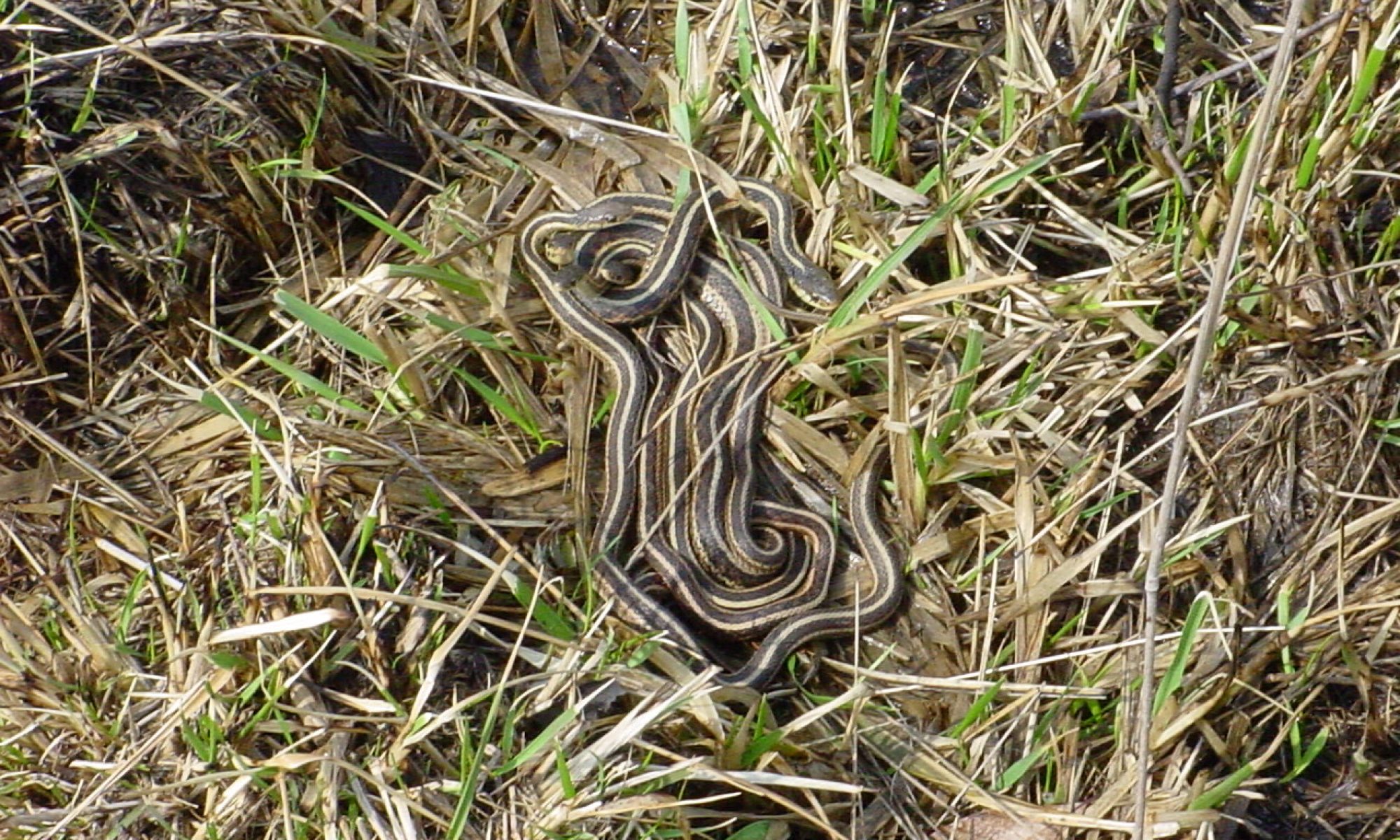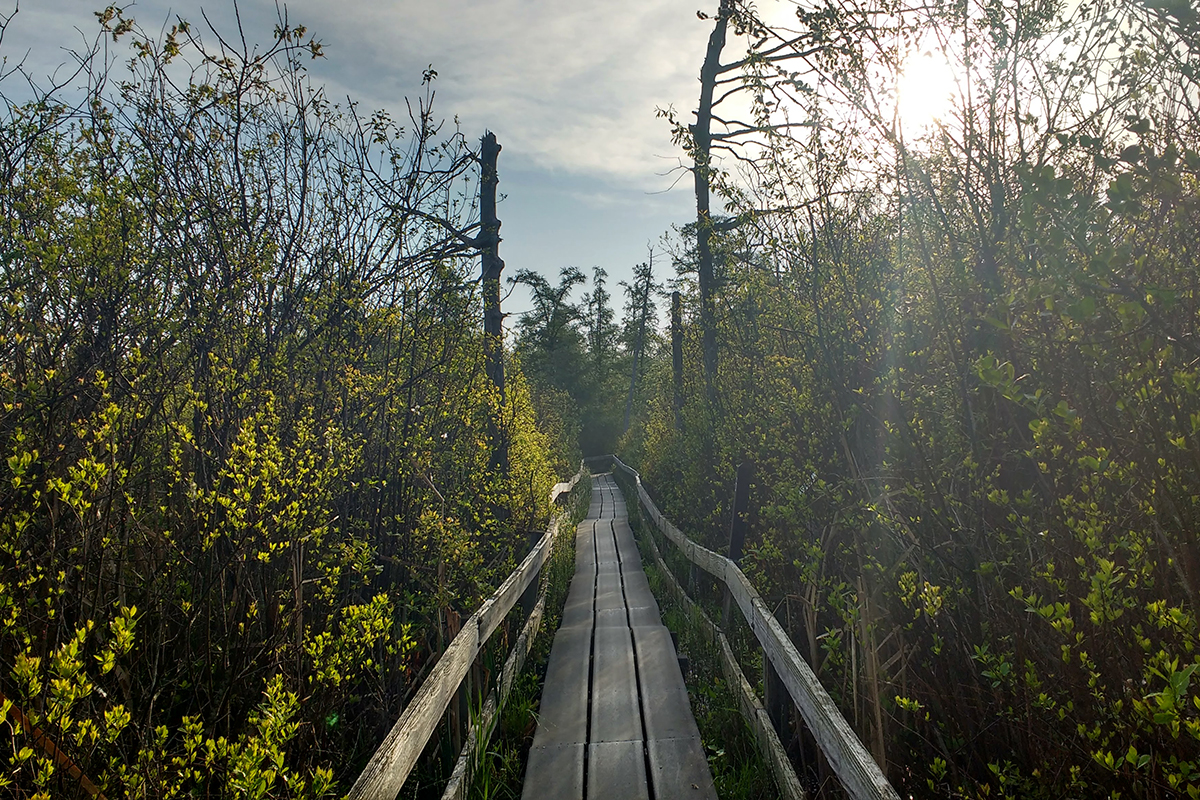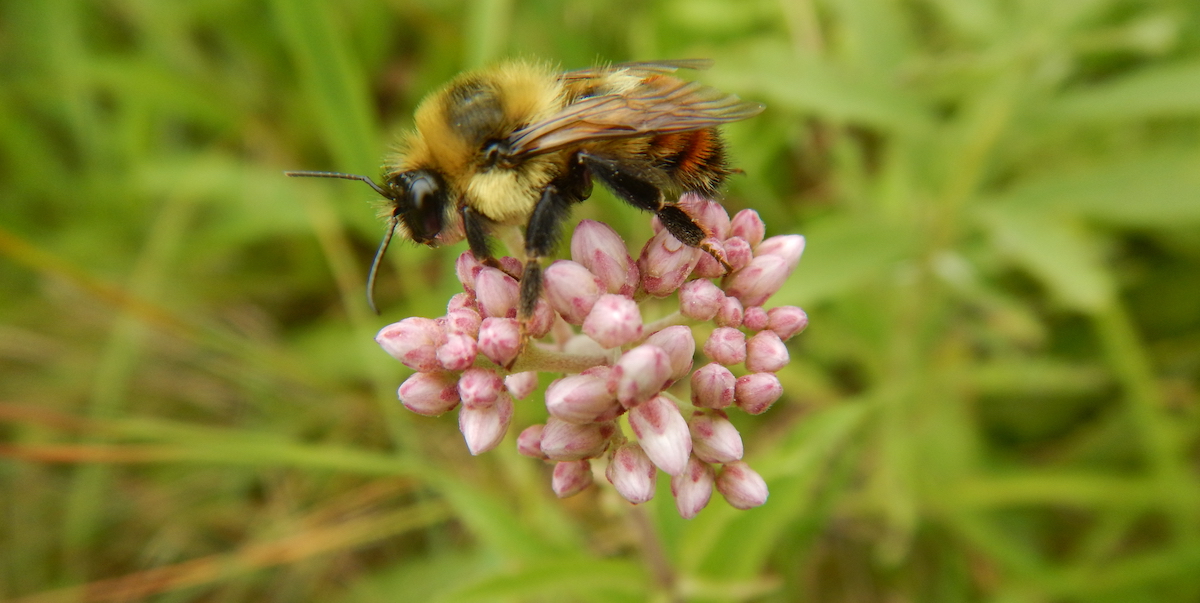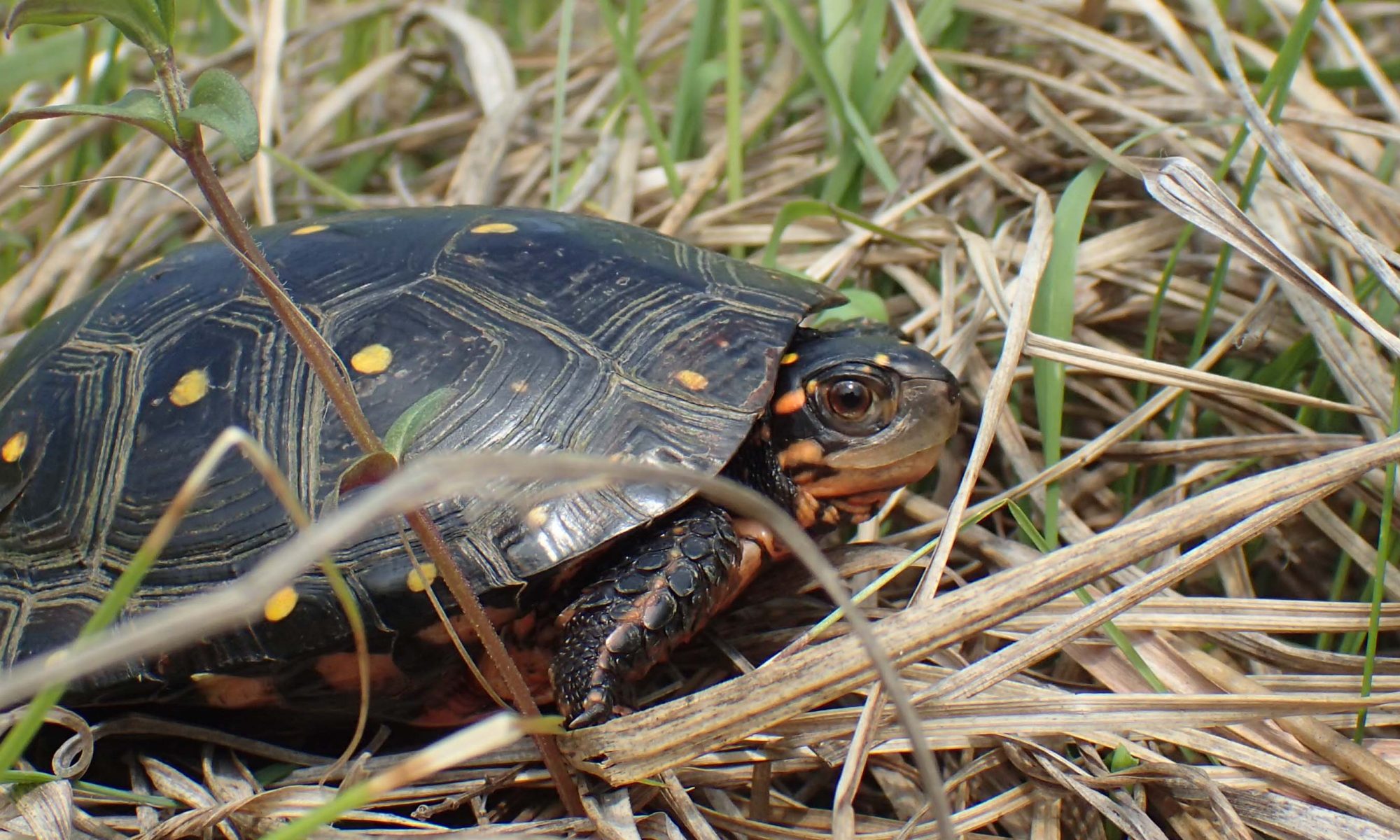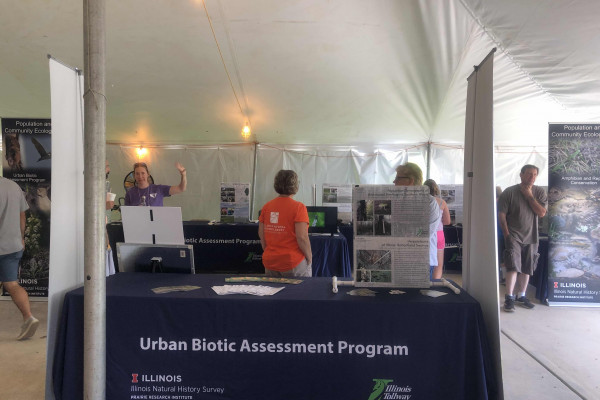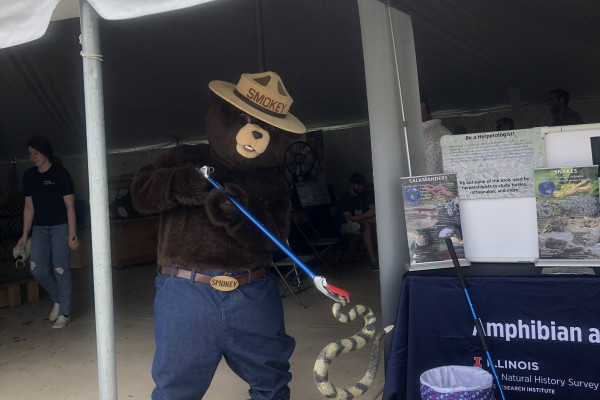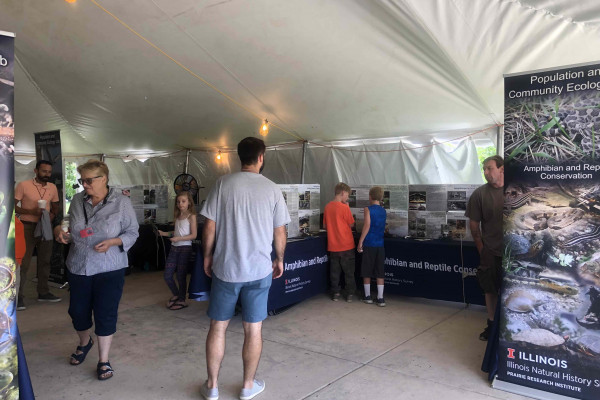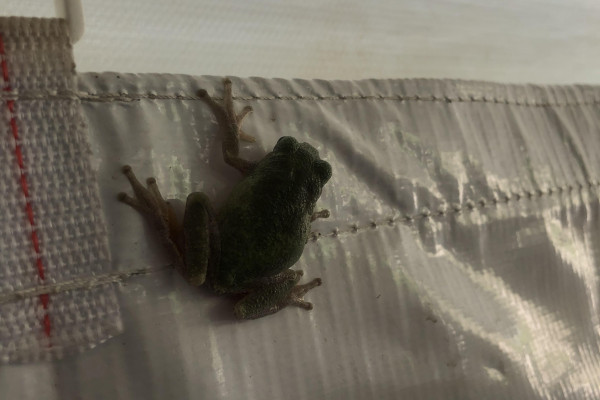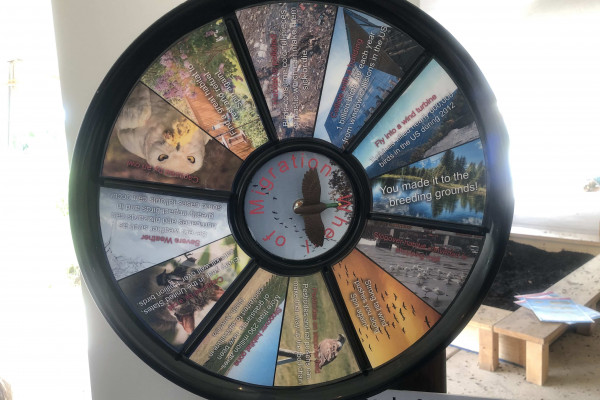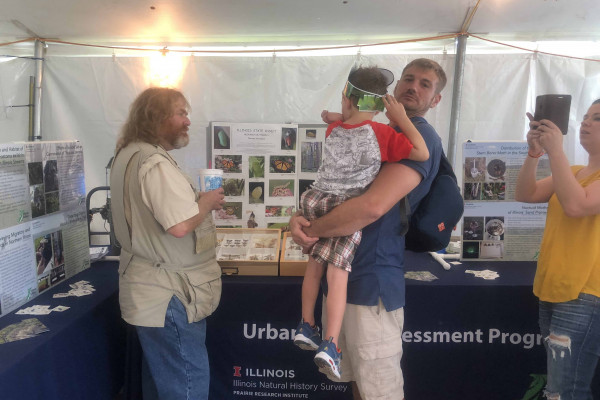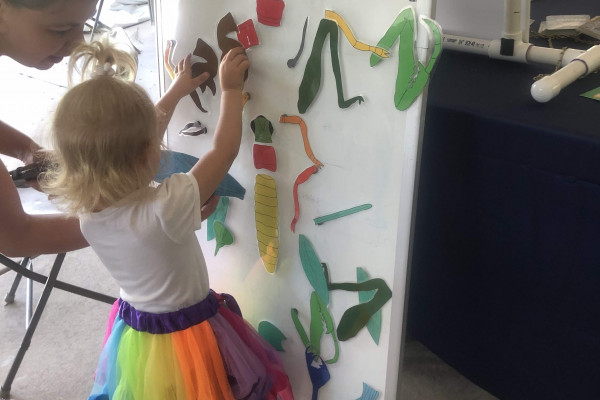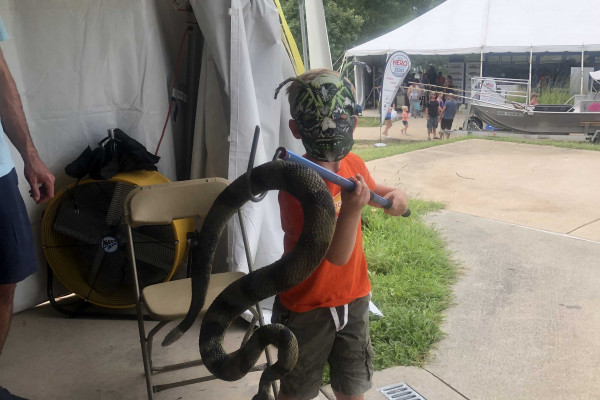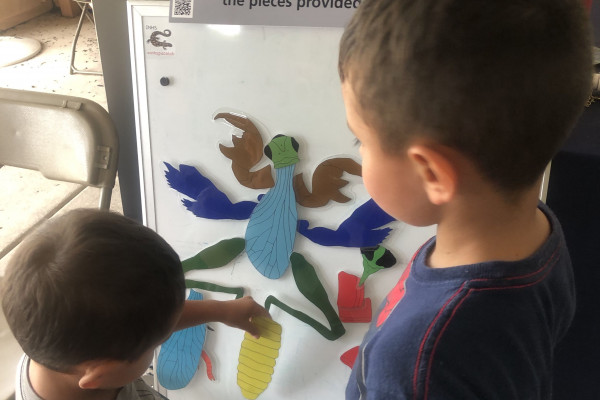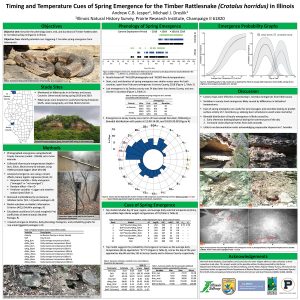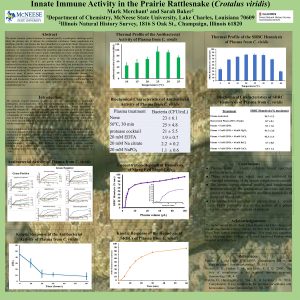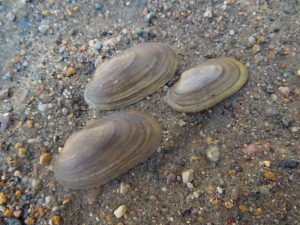 Sarah Douglass, was announced as the 2021 Philip Smith Memorial Award Winner. Her submission was titled “Using environmental DNA (eDNA) to detect a rare freshwater mussel species, Salamander Mussel Simpsonaias ambigua, in the Embarras River, Illinois”. Sarah is an Malacologist with the Illinois Natural History Survey.
Sarah Douglass, was announced as the 2021 Philip Smith Memorial Award Winner. Her submission was titled “Using environmental DNA (eDNA) to detect a rare freshwater mussel species, Salamander Mussel Simpsonaias ambigua, in the Embarras River, Illinois”. Sarah is an Malacologist with the Illinois Natural History Survey.
Wild Things Conference goes virtual
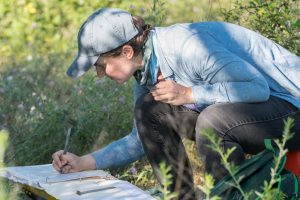 This year, the Wild Things Conference will be virtual and held over two weekends, with live events as well as pre-recorded talks. UBAP ornithologist Asya Rahlin and her collaborators Stephanie Beilke (Audubon Great Lakes), and Libby Keyes (Governors State University) will have a streaming session going during both weekends of the conference.
This year, the Wild Things Conference will be virtual and held over two weekends, with live events as well as pre-recorded talks. UBAP ornithologist Asya Rahlin and her collaborators Stephanie Beilke (Audubon Great Lakes), and Libby Keyes (Governors State University) will have a streaming session going during both weekends of the conference.
Their talk, “A New Bird Banding Station Lands in Chicago” will discuss their project establishing a bird banding station at Big Marsh in the Calumet Region.
Learn about the Chicago Ornithological Society’s bird banding station, which debuted at Big Marsh in 2020, and what they hope to find from using this new banding station to spur research and outreach in the Calumet region.
Behind the Scenes: Finding one elusive bird
UBAP Ornithologist Asya Rahlin is conducting research on cryptic wetland birds utilizing eDNA. Join her as she recounts a hot, sticky day collecting samples at Volo Bog.
Read her Behind the Scenes
Bumblebees bring excitement
PACE Lab graduate student Alma Schrage is surveying sites in northeastern Illinois for the Federally endangered Rusty Patched Bumblebee, including sites that have been restored by the Illinois Tollway. Schrage was recently interviewed by the Chicago Tribune about the work.
Read the full story here
Using three decades of data to save turtles
Champaign, IL – Protecting and restoring habitats are the most important steps that can be undertaken to protect turtle populations into the future according to a pair of recent papers analyzing 3 decades of data.
The Spotted Turtle, Clemmys guttata, is a small semi-aquatic turtle that inhabits sedge meadow, cattail marsh, wet-mesic prairie, and dolomite prairie in Illinois. It is protected as an endangered species in Illinois, which is at the western edge of its range. The two known populations in Illinois have been the focus of mark-recapture studies since 1988.
Recent analysis found that Spotted Turtle populations are limited by the amount of available habitat, suggesting that management efforts should focus on increasing suitable habitat. Control of cattails (Typha sp.) and restoration of sedges would increase the amount of available habitat.
Adults have a higher survival rate than younger turtles. Predators including raccoons and muskrats can eradicate eggs and juvenile turtles. While caging nests and headstarting juveniles will help the younger turtles, controlling predator populations could benefit all age classes.
White Cedar project presented at Great Lakes Coastal Wetlands Symposium
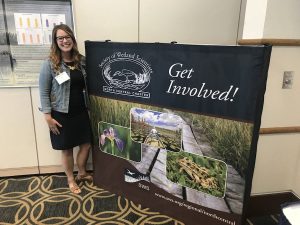 Sara Johnson, of the Molano-Flores lab at the Illinois Natural History Survey, presented a poster and lightning talk about Illinois Tollway funded research on the Effects of Soluble Salt on the Germination of Thuja occidentalis at the Great Lakes Coastal Wetlands Symposium in Maumee Bay, Ohio last week. This conference was the first symposium hosted by Audubon Great Lakes in partnership with the Great Lakes Coastal Assembly and Great Lakes Commission. Sara is a student representative for the North Central Chapter of the Society of Wetland Scientists and acts as Treasurer for the Student Chapter of the society at UIUC.
Sara Johnson, of the Molano-Flores lab at the Illinois Natural History Survey, presented a poster and lightning talk about Illinois Tollway funded research on the Effects of Soluble Salt on the Germination of Thuja occidentalis at the Great Lakes Coastal Wetlands Symposium in Maumee Bay, Ohio last week. This conference was the first symposium hosted by Audubon Great Lakes in partnership with the Great Lakes Coastal Assembly and Great Lakes Commission. Sara is a student representative for the North Central Chapter of the Society of Wetland Scientists and acts as Treasurer for the Student Chapter of the society at UIUC.
PaCE Lab at the Illinois State Fair
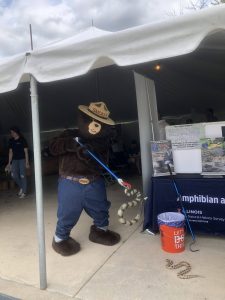
Members of the PaCE Lab exhibited in Conservation World at the 2019 Illinois State Fair, providing information and education to over 500 visitors. In addition to displays about the research being done by the group, visitors were able to try their hand at using actual field equipment used by scientists in their daily work.
The Illinois Bat Conservation Program had a mist net deployed where visitors could untangle, identify, and measure bats, all while wearing leather gloves.
The Amphibian and Reptile Conservation group had snake tongs, hooks, calipers, and radio telemetry equipment available for visitors to try to wrangle snakes into a snake bag, measure turtles, or track a hidden turtle.
Other activities included Build-a-Bug, where people can assemble the arthropod of their dreams (or nightmares) from a variety of general and specialized appendages, Wheel of Migration, about the risks migratory birds face, and locating PIT-tagged animals.
PaCE Lab at Biology of the Pit-Vipers
PaCE Lab Members and affiliates presented four posters at the third Biology of the Pit-Vipers conference held in Rodeo New Mexico – July 11 – 14 2019.
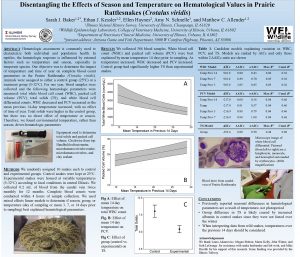 Baker, S. J., E. J. Kessler, E. Haynes, A. N. Schnelle, and M. C. Allender. Disentangling the effects of season and temperature on hematological values in Prairie Rattlesnakes (Crotalus viridis).
Baker, S. J., E. J. Kessler, E. Haynes, A. N. Schnelle, and M. C. Allender. Disentangling the effects of season and temperature on hematological values in Prairie Rattlesnakes (Crotalus viridis).
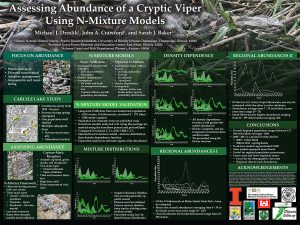 Dreslik, M. J., J. A. Crawford, and S. J. Baker. Assessing abundance of a cryptic viper using N-Mixture models.
Dreslik, M. J., J. A. Crawford, and S. J. Baker. Assessing abundance of a cryptic viper using N-Mixture models.
Jesper, A. C. B., and M. J. Dreslik. Timing and temperature cues of spring emergence for the Timber Rattlesnake (Crotalus horridus) in Illinois.
Merchant, M., and S. Baker. Innate immune activity in the Prairie Rattlesnake (Crotalus viridis).
UBAP Ornithologist Rahlin receives Kushlan Research Award
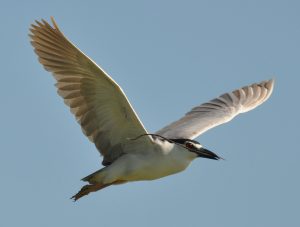
UBAP Ornithologist Anastasia Rahlin received the Kushlan Research Award from the Waterbird Society to assist her research project entitled “Using environmental DNA sampling to determine heron and bittern occupancy in western and northern Michigan: a metagenomics approach.”
This work will improve knowledge of the ranges and population sizes of Black-crowned Night Herons, Yellow-crowned Night Herons, American Bitterns, and Least Bitterns and will inform conservation and management decisions for these rare and declining wetland birds.
9 days, 3 conferences, 8 talks, 2 posters
It’s been a busy week of sharing science for members of the PACE lab.
The Chicago Wilderness Wildlife Committee Meeting was held at Lincoln Park Zoo on February 19th:
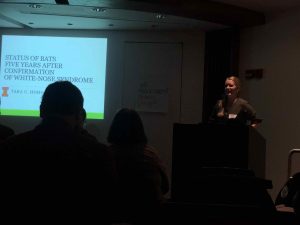 Tara Hohoff presented “The status of Illinois bats five years after confirmation of white-nose syndrome,” using data from her work with the Illinois Bat Conservation Program and the Urban Biotic Assessment Program monitoring for the Illinois Tollway.
Tara Hohoff presented “The status of Illinois bats five years after confirmation of white-nose syndrome,” using data from her work with the Illinois Bat Conservation Program and the Urban Biotic Assessment Program monitoring for the Illinois Tollway.
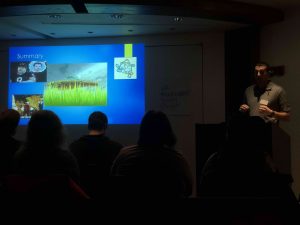 Joshua Sherwood presented “Assessing the distribution and habitat of Iowa Darters (Etheostoma exile) in Illinois,” with co-authors Andrew Stites, Jeremy Tiemann, and Michael Dreslik. This work changed the way people look for the Iowa Darter.
Joshua Sherwood presented “Assessing the distribution and habitat of Iowa Darters (Etheostoma exile) in Illinois,” with co-authors Andrew Stites, Jeremy Tiemann, and Michael Dreslik. This work changed the way people look for the Iowa Darter.
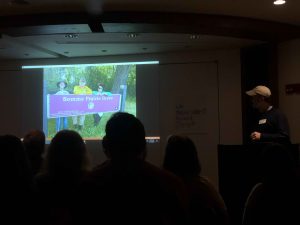 Jason Robinson presented “Patterns of abundance and co-occurrence of bumblebees associated with the Rusty Patched bumblebee.” RPBB is a federally protected species found in northeastern Illinois that has experienced a decline in its range.
Jason Robinson presented “Patterns of abundance and co-occurrence of bumblebees associated with the Rusty Patched bumblebee.” RPBB is a federally protected species found in northeastern Illinois that has experienced a decline in its range.
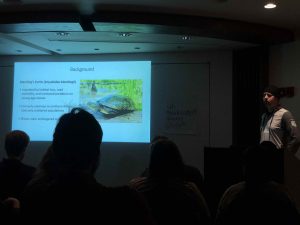 Jason Ross presented “Demographic influence of head-starting on a Blanding’s Turtle (Emydoidea blandingii) population in DuPage County, Illinois,” with co-author Michael Dreslik, discussing what amount of head-starting is needed to keep this population viable
Jason Ross presented “Demographic influence of head-starting on a Blanding’s Turtle (Emydoidea blandingii) population in DuPage County, Illinois,” with co-author Michael Dreslik, discussing what amount of head-starting is needed to keep this population viable
The 2019 Wild Things Conference was held in Rosemont on February 23rd:
Tara Hohoff, representing the Illinois Bat Conservation Program, presented a poster “Year Three of the Illinois Bat Conservation Program.”
Anastasia Rahlin co-presented “Secretive Marsh Birds in the Big City.” with Audubon collaborator Stephanie Beilke on their ongoing work using playback to detect 17 focal wetland bird species in northeast Illinois and southeast Indiana. Soras were the most commonly detected species which was surprising/unexpected since Marsh Wrens and Swamp Sparrows are expected to be more common, and Little Blue Herons and Yellow-headed Blackbirds were the least detected which was pretty expected due to their declines. Future directions include creating species-specific occupancy models to better understand how our focal species respond to urbanization and presence of different wetland types at three different spatial scales.
Josh Sherwood presented “Current status of Bigeye Chub (Hybopsis amblops) in Illinois”.
Sarah Douglass presented “A preliminary analysis of mussel population dynamics in the Kishwaukee River.”
Jeremy Tiemann presented “Pulling the plug – Results of the fish and mussel salvage following the removal of the Danville Dam on the Vermilion River.”
Andy Stites presented a poster “Fecundity estimates of the Gravel Chub Erimystax x-punctatus“
